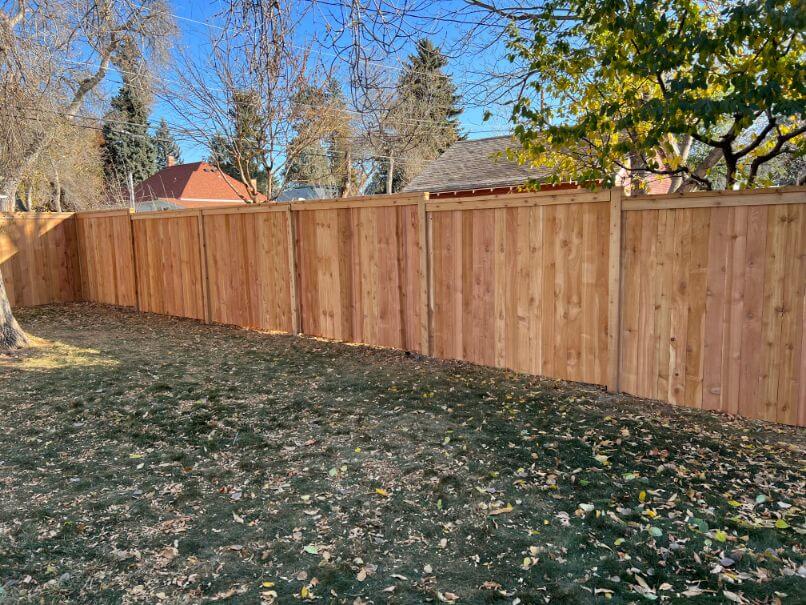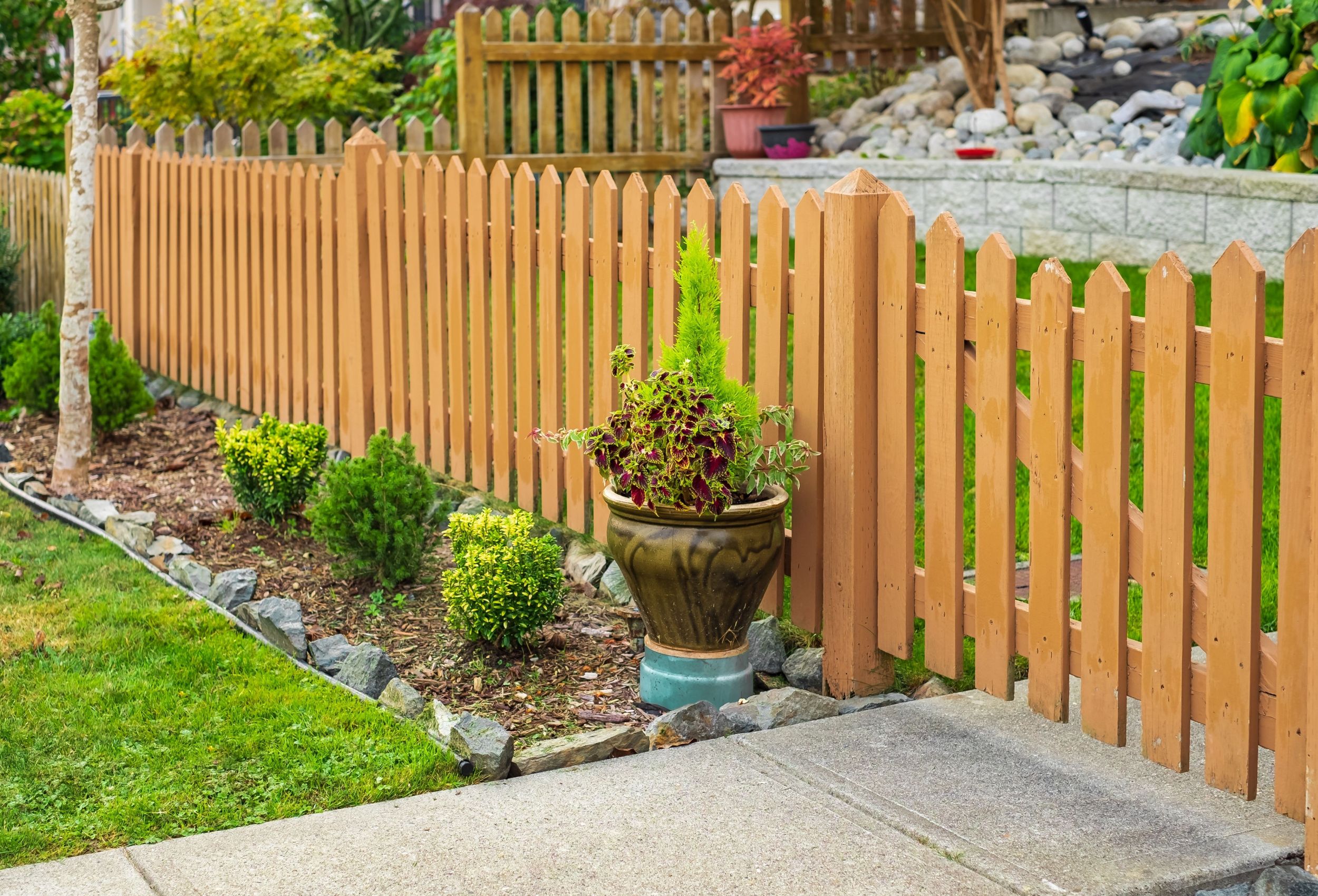All Categories
Featured
When it pertains to keeping a wood fence, house owners frequently deal with the choice of whether to tarnish or paint. Both alternatives have their pros and cons, and the option eventually depends on your aesthetic choices, the kind of wood, and just how much upkeep you agree to commit to. Here's an in-depth contrast to help you make an informed choice.
The Fundamentals of Painting and Staining
Painting entails covering the timber with an opaque layer of color. It provides full protection, hiding the wood grain while providing exceptional protection versus ecological elements.
Staining passes through the timber, enhancing its all-natural appeal while adding a safety layer. Depending upon the type, stains can vary from transparent to solid, permitting differing levels of wood grain visibility.
Advantages And Disadvantages of Paint
Pros:
Wide Variety of Color styles: Repaint offers endless shade options, permitting you to match your fence to your home's outside or personal style.
Longer Lasting: Top quality outside paint can last approximately 5-7 years, needing less regular reapplication.
Superior Security: Repaint forms a thick, strong barrier versus moisture, UV rays, and bugs.
Disadvantages:
Fracturing and peeling: In time, paint can break or peel off, particularly in areas with severe climate conditions.
Hides Natural Timber Charm: If you love the all-natural grain of timber, paint might not be the very best selection.
Higher Upkeep: Repainting requires removing the old paint, which can be labor-intensive.
![]()
Advantages And Disadvantages of Discoloration
Pros:
All-natural Appearance: Stains maintain and boost the all-natural appeal of the wood, making it ideal for top quality lumber like cedar or redwood.
Simpler to Reapply: Unlike paint, stains do not peel off or split. Reapplying discolor commonly calls for less surface area prep work.
Adaptable Finish Choices: Discolorations been available in clear, semi-transparent, and strong selections, supplying different levels of coverage.
Cons:
![]()
Much Shorter Life-span: Discolorations, particularly clear and semi-transparent ones, might need reapplication every 2-3 years.
Limited Shade Options: While stains provide all-natural tones, they do not have the broad color scheme available with paint.
Much Less Protective: Spots penetrate the wood however do not give as thick an obstacle as paint, making them somewhat less safety versus extreme climate.
Variables to Think About
Aesthetic Preferences: If you want lively shades and full coverage, paint is the means to go. For a natural and rustic look, go with discolor.
Wood Kind: Top notch woods with gorgeous grains take advantage of discoloration, while lower-grade woods can be painted for a refined appearance.
![]()
Climate: In damp or humid environments, paint's thicker barrier may provide much better protection. In dry or modest environments, stains can be enough.
Upkeep Commitment: Paint entails less regular reapplication but more initiative throughout touch-ups. Staining calls for normal maintenance yet is easier to handle.
Last Thoughts
Both painting and discoloration can efficiently secure and improve your wooden fence. The very best choice relies on your priorities, whether they lean towards aesthetics, durability, or ease of maintenance. By recognizing the advantages and downsides of each, you can select the surface that aligns with your demands and guarantees your fence continues to be a standout function of your residential or commercial property for years ahead.
The Fundamentals of Painting and Staining
Painting entails covering the timber with an opaque layer of color. It provides full protection, hiding the wood grain while providing exceptional protection versus ecological elements.
Staining passes through the timber, enhancing its all-natural appeal while adding a safety layer. Depending upon the type, stains can vary from transparent to solid, permitting differing levels of wood grain visibility.
Advantages And Disadvantages of Paint
Pros:
Wide Variety of Color styles: Repaint offers endless shade options, permitting you to match your fence to your home's outside or personal style.
Longer Lasting: Top quality outside paint can last approximately 5-7 years, needing less regular reapplication.
Superior Security: Repaint forms a thick, strong barrier versus moisture, UV rays, and bugs.
Disadvantages:
Fracturing and peeling: In time, paint can break or peel off, particularly in areas with severe climate conditions.
Hides Natural Timber Charm: If you love the all-natural grain of timber, paint might not be the very best selection.
Higher Upkeep: Repainting requires removing the old paint, which can be labor-intensive.

Advantages And Disadvantages of Discoloration
Pros:
All-natural Appearance: Stains maintain and boost the all-natural appeal of the wood, making it ideal for top quality lumber like cedar or redwood.
Simpler to Reapply: Unlike paint, stains do not peel off or split. Reapplying discolor commonly calls for less surface area prep work.
Adaptable Finish Choices: Discolorations been available in clear, semi-transparent, and strong selections, supplying different levels of coverage.
Cons:

Much Shorter Life-span: Discolorations, particularly clear and semi-transparent ones, might need reapplication every 2-3 years.
Limited Shade Options: While stains provide all-natural tones, they do not have the broad color scheme available with paint.
Much Less Protective: Spots penetrate the wood however do not give as thick an obstacle as paint, making them somewhat less safety versus extreme climate.
Variables to Think About
Aesthetic Preferences: If you want lively shades and full coverage, paint is the means to go. For a natural and rustic look, go with discolor.
Wood Kind: Top notch woods with gorgeous grains take advantage of discoloration, while lower-grade woods can be painted for a refined appearance.

Climate: In damp or humid environments, paint's thicker barrier may provide much better protection. In dry or modest environments, stains can be enough.
Upkeep Commitment: Paint entails less regular reapplication but more initiative throughout touch-ups. Staining calls for normal maintenance yet is easier to handle.
Last Thoughts
Both painting and discoloration can efficiently secure and improve your wooden fence. The very best choice relies on your priorities, whether they lean towards aesthetics, durability, or ease of maintenance. By recognizing the advantages and downsides of each, you can select the surface that aligns with your demands and guarantees your fence continues to be a standout function of your residential or commercial property for years ahead.
Latest Posts
The Benefits of Routine Vehicle Maintenance at Montclare Auto Repair Saves You Money
Published en
1 min read
Choosing the Right Roofing Color: Influence On Power Effectiveness
Published en
1 min read
Boost Your Home's Outside with Weathercraft's House siding Solutions
Published en
1 min read
More
Latest Posts
The Benefits of Routine Vehicle Maintenance at Montclare Auto Repair Saves You Money
Published May 26, 25
1 min read
Choosing the Right Roofing Color: Influence On Power Effectiveness
Published May 24, 25
1 min read
Boost Your Home's Outside with Weathercraft's House siding Solutions
Published May 24, 25
1 min read